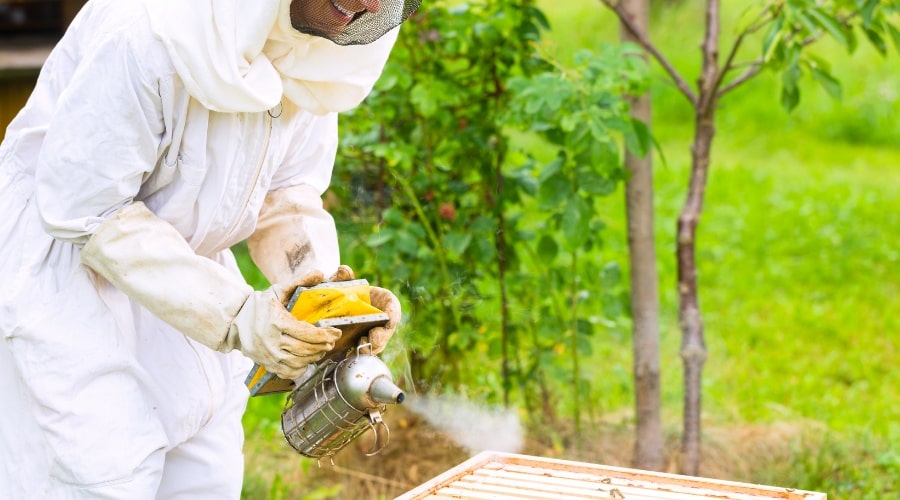Understanding the differences between honeybees and wasps helps you manage your hive and avoid unnecessary concerns. Although they look similar, their behaviors, roles, and purposes in nature are distinct.
Physical Differences
Honeybees and wasps are distinguishable by their appearance. Honeybees have hairy, oval-shaped bodies. Their hair helps collect pollen during foraging. They are usually golden-brown with black bands, giving them a fuzzy look.
Wasps have smooth, slender bodies with a more defined waist. Their colors are typically bright yellow and black, giving them a more aggressive appearance. These physical traits help wasps move quickly and efficiently while hunting prey.
If you’re unsure, observe the insect’s body. The presence of hair and a rounded shape indicates a honeybee. A smooth body with a pointed waist is likely a wasp.
Nesting Habits
Honeybees build wax combs inside their hives. These combs store honey, pollen, and brood. Bees prefer sheltered spaces, such as hollow trees or human-made hives, which protect their colonies.
Wasps create paper-like nests using chewed wood fibers. They often build these nests in exposed areas, like under eaves or tree branches. Unlike honeybee hives, wasp nests do not store food for long-term use.
Honeybees work year-round to maintain their hives. Wasps, however, abandon their nests in winter, starting fresh each spring.
Behavior and Roles
Honeybees are social insects that rely on a well-organized caste system. The colony includes a queen, workers, and drones. Each caste has a specific role:
- Queen: Lays eggs to ensure the colony’s growth.
- Workers: Forage for nectar, build comb, and care for young bees.
- Drones: Mate with queens from other hives to ensure genetic diversity.
Wasps also live in colonies but exhibit more aggressive behavior. Their caste system includes queens and workers. Unlike honeybees, wasps are predatory and hunt other insects for food. They play a role in pest control but do not produce honey or pollinate plants significantly.
Stinging Behavior
Honeybees sting only as a last resort. When a honeybee stings, it dies because its stinger detaches from its body. This self-defense mechanism is primarily used to protect the hive.
Wasps can sting multiple times without dying. They are more likely to sting when provoked. Their stinging behavior is defensive and often more aggressive than that of honeybees.
If you’re handling bees, use calm, deliberate movements to avoid provoking them. Understanding their behavior reduces the risk of stings.
Importance in Nature
Honeybees are vital pollinators. They transfer pollen between flowers, helping plants reproduce. This role supports agriculture and natural ecosystems. Honeybees also produce honey, beeswax, and other useful products.
Wasps contribute by preying on other insects. They help control pest populations, which benefits gardens and crops. While they’re not significant pollinators, some species assist in pollination to a limited extent.
Recognizing their unique roles helps you appreciate both insects while focusing on supporting your honeybee hive.
Practical Tips for Beginners
If wasps become a problem near your hive, reduce attractants like sugary drinks or food waste. Avoid swatting at wasps, as this increases their aggression. Install traps or deterrents away from your hive to keep them from interfering with your bees.
By understanding the key differences, you’ll be better equipped to support your bees and maintain a healthy environment.


